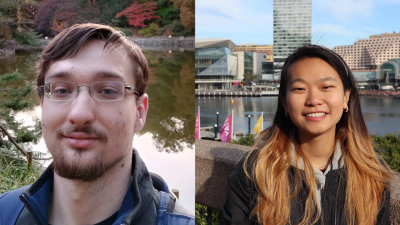Apr 17, 2020
A pair of School of Interactive Computing and Machine Learning Center at Georgia Tech (ML@GT) students were selected as 2020 members of the National Science Foundation Graduate Research Fellowship Program (NSF GRFP).
First-year Ph.D. students Daniel Bolya and Joanne Truong were recognized by the program, which supports graduate students pursuing research-based Masters and doctoral degrees at United States institutions.
The NSF GRFP provides financial support for three years, comprised of a $34,000 stipend per 12-month fellowship year, as well as a direct payment of $12,000 to Georgia Tech toward the cost of education for each of the three years of fellowship funding.
Advised by assistant professor Judy Hoffman, Bolya works with machine learning and computer vision. Recent work at Georgia Tech has focused on error profiling in instance segmentation and object detection models. His method, building upon previous work at MIT, is unique in that it captures all possible sources of error in a model, while properly weighing the importance of each. He plans to continue the pursuit of faster methods of instance segmentation that can he make accessible. Current methods are not practical for many applications due to limits in speed, accuracy, and data efficiency. His research addresses this challenge.
“This is not just about computer vision,” he said in his research statement. “Improving instance segmentation would impact the tech we use every day.”
Like his work at MIT, called YOLACT, he plans to fully release the project open source once it is ready.
Truong’s long-term research goal is to develop robots that can see, talk, reason, and act in complex human environments. Specifically, she will focus on a method called “sim2robot transfer,” which develops efficient domain adaptation techniques to enable pre-training of AI agents in simulators.
“The overall goals of my research plan are to, one, break down the possible errors in simulation-to-reality transfer that result in a reality gap, and, two, close the loop between simulation and reality by using data collected on a real robot to finetune and optimize parameters in simulation,” said Truong, who is co-advised by associate professors Dhruv Batra and Sonia Chernova.
She worked on the first goal last fall, achieving optimization in simulator settings for sim2real predictivity. Currently, she is working on the second goal, developing domain adaptation techniques to enable low-shop adaptation between simulation and reality.


